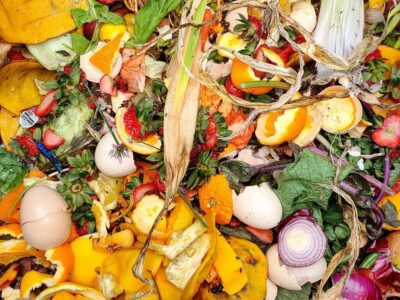Pooja Chawda currently works as a sustainability program manager in infotech sourcing at Meta. Prior to that, she worked at the New York State Energy Research and Development Authority (NYSERDA), analyzing regulatory landscapes to support the development of policies and strategies mandated by the Climate Law and Community Protection Act, and driving engagement for emerging efficiency, electrification, and carbon valuation policies.

Chawda is now an adjunct faculty and will be teaching one of the most popular courses in the SUMA program: Theory and Practice Life Cycle Assessment.
What initially motivated you to pursue the field of sustainability?
Since my former career in the United Nations, and what led me to join that organization in the first place, was the belief in helping disadvantaged communities obtain basic sustenance and a means to live a dignified life. I worked with war-torn communities to support sustainable development by helping former warring parties to become law-abiding citizens. I was always drawn to environmental stewardship. With the grim news surrounding the IPCC and other global warnings starting 2013, I realized the critical need to set ambitious emissions reduction goals.
After a decade of work in this space, I realized that a major place to obtain emissions reductions are within a company’s value chain addressing Scope 3 emissions. To address Scope 3 reductions, a company should be able to set and achieve reduction goals across their value chain to lower their carbon footprint, by using levers such as switching to renewable energy resources, using more sustainable materials and identifying emissions hotspots. That will allow us to lower our carbon footprint and move towards our global 2030 goals set by the UN.
So, for me, it is all really connected, and that is what placed me into the sustainability space and continues to manifest in all the work that I do — because I now realize that we cannot just be “neutral” here. Making sure suppliers and the value chain globally understand our goals is crucial. And I am honored to contribute to sustainable procurement in a vastly challenging and complex time.
What drew you to the Sustainability Management program?
After almost a decade of working in foreign policy and diplomacy, I had figured out the governance aspect of the environmental, social, and governance (ESG) nexus. Similarly, having a bachelor’s in communication and spending the majority of my life in countries other than my country of origin also heightened my understanding of the social aspect of how humankind functions, and our responsibility to each other. When I applied to the Sustainability Management program, I had significant global experience in the “social and governance” aspect in the ESG nexus, but I lacked the environmental/scientific perspective from a sustainability viewpoint, which would complete the nexus for me. The combination of a curriculum that had both STEM-intensive courses from leading practitioners created a once-in-a-lifetime opportunity for me to hone those skills.
What course will you be teaching and what are you most excited about?
I will be teaching Theory and Practice Life Cycle Assessment (LCA), a methodology to assess the environmental impact of products, services, and industrial processes, is an increasingly important tool in allowing companies to address their Scope 3 emissions. This course teaches both the theoretical framework as well as step-by-step practical guidelines of conducting LCAs in any organization. The course also covers the application of LCA metrics in a company’s management and discusses the methodological weaknesses that make such application difficult, including how these can be overcome. I am most excited to be able to contribute to students’ in-depth understanding of life cycle assessments and the linkages to corporate sustainability, as well as a deep dive into Scope 3 emissions in the product and services life cycle. Students will explore life cycle assessment techniques, industrial ecology, and innovation in the following industries critical to the climate economy: semiconductors, solar, energy storage, vehicle electrification, circularity. At the end of this course, students will be capable of independently completing an ISO-compliant life cycle assessment.
What changes do you hope to see in the field of sustainability in the future?
There are many headwinds coming our way — including supply chain shortages, infrastructure needs and resourcing, and having reliable data to root decisions in. I hope that the quality of data can be improved as it relates to supplier-specific emissions. There is also the tension between supply chain constraints and decoupling emissions from business growth. I hope that, due to process efficiencies and collective industry work, supply chains can become more nimble. It all comes down to building strong foundational relationships to make sure we keep the momentum, and that our stakeholders push us to achieve maximum emissions reduction, which translates into action plans. Hopefully all these aspects will add up to reductions that really matter.
What advice to you have for students?
From day 1 at Columbia, I found it useful to think about sustainability in two buckets: keeping up with industry and honing my technical skills. Being up to speed with industry-leading practices is important to really understand what can be done to reduce carbon emissions, energy efficiency, water etc. This can be very helpful in setting the stage for your own sustainability journey. And honing your technical skills and leaning on data which has tremendous power to drive your decision making can well complement your analytical thinking and allows you to come from a place of being truly strategic. We need every voice and creative idea to see us maintain the temperature to well below 1.5 C in 2030.



